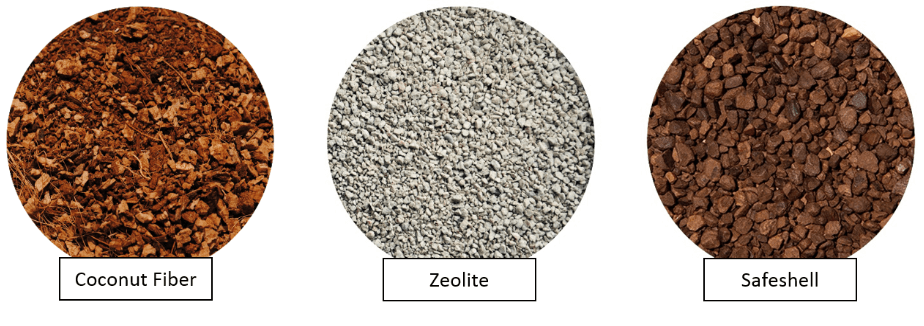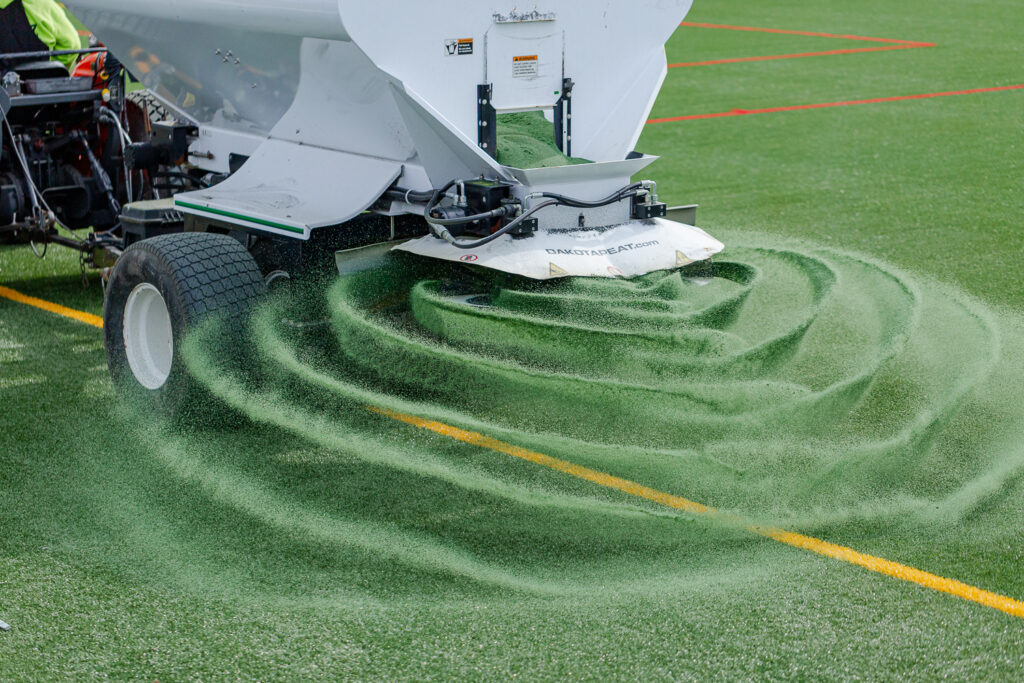
Sports Field Blog
Subscribe To Email Updates
Subscribe to our weekly newsletter and we’ll send updates straight to your inbox
Infill & Turf Surface Heat – Evaporative Cooling
In today’s sports world, it seems there are countless considerations when designing a field. Player speed, ball interaction, gmax/impact attenuation, aesthetics, maintenance, warranty, sustainability, abrasion…the list goes on. One element becoming a bigger consideration is surface heat. Some synthetic turf fields can reach temperatures 35º to 55º F hotter than natural grass fields. Natural grass fields allow for evaporative cooling, continually absorbing water through the root and grass blade structure, then transpiring water over time to keep surfaces cooler. When it comes to synthetic turf fields, the turf fibers and the infill can each contribute to higher temperatures if they do not have a mechanism to cool themselves. To combat high temperatures on synthetic fields, field designers and owners have looked to natural infill products to allow for absorption and evaporative cooling over time, while maintaining player speed, ball interaction, gmax/impact attenuation, aesthetics, maintenance, warranty, sustainability, abrasion…….
Its widely known that the earth’s temperature continues to increase. Beliefs put aside, the data shows that 16 of the 17 warmest years in the 136-year record have occurred since 2001. In other words, 94% of the earth’s hottest years in the last 136 years have occurred in the time synthetic turf has become popular. It’s shown that the average global temperature has increased nearly 0.8 º F since the year 2000. While a fraction of a degree may not seem like much, it’s a continued trend that is increasing exponentially. To understand evaporative cooling, the most common example would be perspiration. To elaborate, water must have heat to alter its form from liquid to vapor. Water can hold a large amount of heat without changing temperature. Water will absorb heat from surfaces (skin or synthetic turf for example) making the surface cooler. When enough heat is absorbed, the water will change from liquid to gas and leave the surface. The result is a decrease in surface heat. In summary, by holding more water at the surface of a synthetic turf field (through infill absorbency), the field should see a decrease in surface temperature.
Understanding not all infills are made equal, we can compare absorbency percentages of a product by turning to ASTM C128 –Standard Test Method for Relative Density (Specific Gravity) and Absorption of Fine Aggregate. [Info in the rest of this paragraph has been condensed.] Absorption is the measurement of water in the pores of the specimen (infill in this case). When pores are completely filled, but no surface moisture is present, the infill is in a Saturated Surface Dry (SSD) condition. In summary, the infill sample is dried from its natural state, immersed in water for 24 hours, dried to SSD, then tested. Using the SSD specimen weight and the oven dried specimen rate, we can calculate the absorption percentage for each infill. Watch an explanation of ASTM C128 here: www.youtube.com/watch?v=yiQ4AjBui8E.


As shown in the results above, coconut fibers (71.5%) have the highest absorption percentage under ASTM standards. However, coconut fibers require importation from places far away like Sri Lanka and are known to breakdown or degrade faster than other natural products especially when dry. Zeolite (22.1%) was second with Safeshell (21.3%) a close third. Absorption is not the only characteristic, one must also refer to durability. Zeolite is known to be brittle and break apart under even the slightest pressure. So, if you are looking for a natural turf infill with evaporative cooling, and durability to withstand heavy use, we suggest contacting us today about Safeshell for your next field. We know surface heat is just one of many considerations for a synthetic turf field, and one that is likely to become a greater focus as the warming trends continue.
[1] http://plantscience.psu.edu/research/centers/ssrc/documents/temperature.pdf
[2] https://climate.nasa.gov/vital-signs/global-temperature/
Similar Blogs



